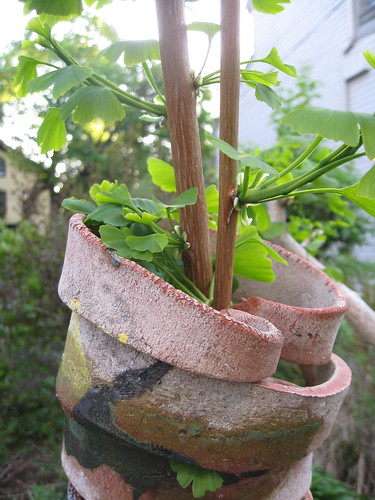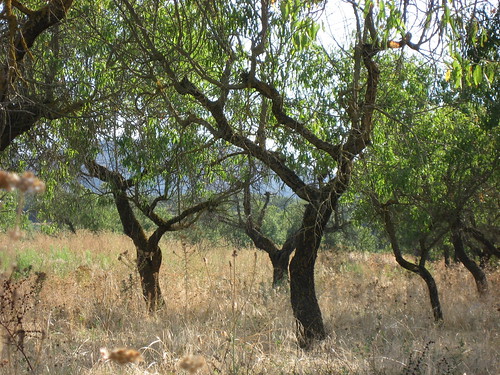I was thinking about how art might play a role in remediating developed landscapes. This is different from wholly natural landscapes, where art might highlight or complement the shape of nature but not take its place.
Consider the beauty of a “specimen tree” or any tree in an ecosystem, and its role in the landscape. The sculptural element of the tree speaks for itself.
But what about in the built environment? Can art “remediate” the developed landscape? It’s a question we can look at from several perspectives.
When I was a teenager living in Chicago we got a trio of monumental pieces of art in the center of town: the Picasso Statue at the Cook County Building, the Chagall Mosaic at what was then LaSalle Bank, and, west of downtown, the Claes Oldenberg Baseball Bat. All three of these pieces did do something to highlight the landscape. As focal points they ameliorated an otherwise rough urban environment. But as works of major artists they stood on their own too. They had little to do with the places they were installed, and nothing in common with the non-human natural environment of the city. Had they been placed in parks it might have been a different story but would they have achieved the "glory" (I add this tongue in cheek) that they demanded as works of major artists?
Fast forward to the upper Midwest. A few years ago I was at a conference in Madison, Wisconsin. The center of town was dotted with what I considered to be pretty awful cow sculptures, decorated, bejeweled, painted, lighthearted, silly. They highlighted the social landscape of Madison as the capital of the cheese state. But did they remediate?
Consider the famous Smithson Jetty in the Great Salt Lake. Another masterpiece. Another art star. A statement. Connected with nature or plopped down in nature? A remediation?
So, thinking about art and how it can remediate the developed environment, I’d like to propose an alternative. Perhaps art can provide a portal through which viewers can come to understand their place in the world more thoroughly. At the same time, maybe they can come to understand nature in a more complete way.
I guess I’m arguing for less “star” art (the Chicago trio or the Jetty) and less “cute” art (the Madison cows). What about art that frames the landscape, providing people with a focal point that allows them to think “I stand here” visually and phenomenologically?
I’d like to argue that such art need not be monumental. Perhaps even small pieces can act as focal points.
Larger pieces, perhaps installed in patterns, could also provide a sense of place.
Lots of potential points of discussion here. I’d love to hear what you have to say.




No comments:
Post a Comment